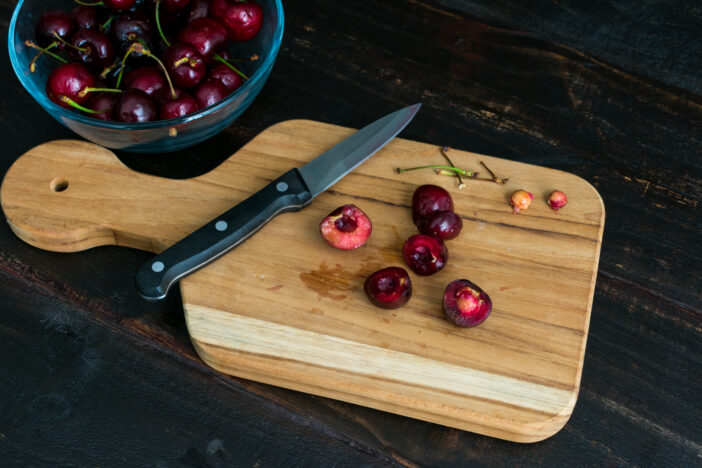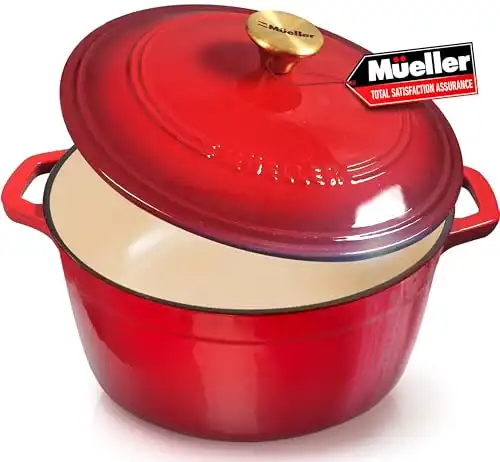10 French Cooking Tools You Need to Cook Like a Pro
Essentials for French cuisine at home include quality cookware, versatile chef’s knife, heavy-duty Dutch oven, nonstick skillet, rimmed baking sheet, silicone baking mat, tart pan, fish spatula, metal tongs, wooden cutting board, core ingredients like Herbes de Provence, French cheeses, quality butter and dairy, specialty utensils like ramekins, mortar & pestle, paring knife, French butter dish, linen kitchen towels, and soufflé dish for authentic French dishes.

Dive into French cuisine and turn your kitchen into a hub of culinary excellence. France’s rich gastronomic traditions come alive with ingredients like butter, cheese, wine, and garlic. These staples elevate your dishes, bringing a taste of French culinary art to your table.
Diving into the world of French cuisine starts with equipping your kitchen with the right tools. Quality cookware is not just an investment in your cooking, it’s the foundation of all the delicious dishes you’ll create. Here’s what you need to know.
Disclosure: As an Amazon Associate, this site earns from qualifying purchases. Thank you!
Choosing a Versatile Chef’s Knife
A versatile chef’s knife is your culinary best friend. It’s the Swiss Army knife of the kitchen, perfect for chopping herbs, slicing cheese, and everything in between. Opt for one with a comfortable grip and a blade that’s sharp enough to handle daily tasks with ease. Remember, a good chef’s knife brings precision to your prep work, making it essential for crafting authentic French dishes.
The Significance of a Heavy-Duty Dutch Oven
A heavy-duty Dutch oven is a staple in French cooking for good reason. Ideal for slow-cooking, braising, and making those hearty stews and soups, its versatility is unmatched. Look for one that’s oven-safe and has a tight-fitting lid to lock in flavors. This cookware piece is perfect for a boeuf bourguignon that simmers on the stove or an oven-baked cassoulet, offering the kind of slow-cooked depth that French cuisine is renowned for.
The Role of a Nonstick Skillet in French Cooking
A nonstick skillet might not scream traditional French cookware, but its role in your kitchen is invaluable. From omelets and crêpes to searing fish and cooking delicate sauces, a good nonstick skillet ensures your food releases easily and cleanup is a breeze. For dishes where precision and presentation matter, this tool can be your secret weapon, making it a must-have for any home cook aiming to master French cuisine.
Baking Essentials
Moving on from must-have cookware, let’s dive into the realm of baking essentials. Mastering French cuisine at home isn’t just about sautéing and simmering—it’s also about embracing the art of baking. With these key items, you’ll be well on your way to whipping up classic French pastries and desserts.
The Necessity of a Rimmed Baking Sheet
First up, is the rimmed baking sheet. It’s not just a baking tool; it’s your versatile companion for everything from roasting vegetables for a Ratatouille to baking buttery croissants. A rimmed baking sheet ensures that nothing slips off the edges and helps circulate heat evenly. For ideal results in French baking, you’ll want to opt for heavy-duty aluminum ones that resist warping under high heat, ensuring your delicacies come out perfect every time.
Why a Silicone Baking Mat is a Game-Changer
Next, let’s talk about the silicone baking mat. If you’ve ever experienced the frustration of cookies sticking to a baking sheet or parchment paper that just won’t stay put, a silicone baking mat is your savior. These non-stick, reusable mats fit perfectly onto your rimmed baking sheets, providing an even surface thats ideal for macarons, tuiles, or financiers. Not only do they help with even heat distribution, but their non-stick nature means you can save on parchment paper and easily clean up afterward—a true game-changer in any kitchen.
Importance of a Reliable Tart Pan for Classic French Desserts
Lastly, achieving the quintessence of French baking wouldn’t be possible without a reliable tart pan. The secret behind those flaky, buttery crusts of tarte aux pommes or quiche Lorraine lies in a good tart pan with a removable bottom. This design allows for easy unmolding without damaging the delicate pastry, ensuring your desserts are as beautiful as they are delicious. Opt for pans with fluted edges to impart that classic, elegant shape to your tarts. Remember, with the right tart pan, those daunting French desserts will suddenly seem within reach.
Armed with these essentials, your kitchen will be set for success in exploring the vast, butter-laden world of French baking.
Prepping and Serving Tools
Diving into French cuisine at home isn’t just about the recipes; it’s equally about precision and finesse in preparation and serving. Selecting the right tools can elevate your culinary creations from good to magnifique.
Utilizing a Fish Spatula for Delicate Dishes
A fish spatula becomes your go-to tool for handling the delicate textures inherent in French cooking. Thin, yet sturdy, it is slotted design and angled edge allow for the gentle flipping of fish and seafood, ensuring your sole meunière slides from pan to plate intact. But don’t let its name fool you; it’s also perfect for carefully turning crépes or removing freshly baked madeleines from their molds.
The Functionality of Metal Tongs in French Cuisine
Metal tongs are the unsung heroes of the French kitchen, offering a precise grip without piercing the food, preserving its elegant presentation. They’re indispensable for flipping meat in a sizzling pan of coq au vin or arranging the perfect bouquet garni. With a pair that’s heat-resistant and has a soft grip, you’ll maneuver through cooking with the ease of a Parisian chef.
Selecting the Right Wooden Cutting Board
Every fine meal begins with preparation, and a substantial wooden cutting board sets the stage. Opt for one made from hardwood like maple or cherry, which are durable yet gentle on your knives. Its surface should be spacious enough to accommodate the chopping of fresh herbs and the carving of a roast poulet rôti, embodying the heart of French cooking with every slice. A quality board not only serves as a functional kitchen tool but also doubles as a rustic-chic way to present cheese assortments or charcuterie, bringing a touch of French elegance right to your table.
Must-Have French Cuisine Ingredients
Diving deeper into the essence of French cooking, let’s explore the core ingredients that bring the authentic flavors of France right into your kitchen. The foundation of French cuisine lies in its ingredients – selecting the right ones can elevate your cooking from simple to spectacular.
Herbes de Provence: The Quintessential French Blend

When aiming to infuse your dishes with the fragrant allure of the French countryside, Herbes de Provence is your go-to. This aromatic blend typically includes thyme, basil, rosemary, tarragon, savory, marjoram, oregano, and bay leaf. Sprinkle it over grilled vegetables, mix it into marinades for meats, or incorporate it into your stews and soups for that distinct Provençal flavor. The versatility of Herbes de Provence makes it an indispensable addition to your spice cabinet.
A Guide to Selecting French Cheeses for Your Pantry

No French kitchen is complete without a selection of fine cheeses. Start with classics like Brie, known for its creamy texture and earthy notes, and Camembert, which offers a similar softness with a deeper, richer flavor. For salads and gratins, add crumbles of Roquefort, a bold blue cheese with a tangy kick. Don’t overlook Gruyère, a versatile option for baking into bread, melting into fondue, or simply nibbling with fruit. When selecting cheeses, opt for quality over quantity, focusing on a variety of flavors and textures that will elevate your dishes and delight your taste buds.
The Importance of Quality Butter and Dairy

In French cuisine, butter isn’t just an ingredient; it’s a cornerstone of flavor. Opt for high-quality, unsalted butter, which allows for complete control over the seasoning of your dishes. French brands like Président offer that authentic taste crucial for making flaky pastries, creamy sauces, and sumptuous sautés. Moreover, don’t forget about cream and milk, integral for creating delicate béchamel, luxurious ice creams, and soft, tender crêpes. Investing in top-notch dairy products will ensure your French culinary creations are rich, satisfying, and thoroughly authentic.
Specialty Utensils for Authentic French Dishes
Diving into French cuisine at home goes beyond just having the right ingredients. You’ll need specific tools to bring those beloved recipes to life. Let’s explore the specialty utensils that are essential for crafting authentic French dishes.
Ramekins: A Must for Crème Brûlée and Other Classics
Imagine breaking through the caramelized sugar crust of a crème brûlée without the right dish. It’s not the same, is it? Ramekins, those small, often ceramic dishes, are non-negotiable for this dessert and others like soufflés or chocolate lava cakes. Their thick walls allow for even heat distribution, ensuring your desserts cook perfectly every time. Plus, serving in ramekins adds that authentic bistro touch to your dining table.
Owning a Mortar & Pestle: Advancing Flavor Profiles
Your journey to mastering French cuisine isn’t complete without a trusty mortar and pestle. This ancient tool is crucial for extracting the full spectrum of flavors from herbs and spices. Think about crushing fresh basil and garlic for a Provencal pesto or peppercorns for steak au poivre. The manual grinding process releases oils and flavors that a food processor simply can’t match, deepening the complexity of your dishes.
The Value of a High-Quality Paring Knife

Every French chef knows the importance of precision in cooking. A high-quality paring knife becomes an extension of your hand, ideal for intricate tasks like peeling fruits, mincing shallots, or deveining shrimp. Unlike larger chef’s knives, the compact size and sharp blade allow for meticulous control and accuracy. Investing in a durable, sharp paring knife will not only make prep work more enjoyable but also elevate the final presentation of your dishes.
Choosing the Right Tableware
To truly bring the spirit of French cuisine into your home, the right tableware is as crucial as the ingredients and cookware. From the butter dish resting on your table to the linen towel hanging in your kitchen, each piece holds significance in French dining culture.
The Essential Features of a Classic French Butter Dish

Your journey into French cuisine essentials wouldn’t be complete without a classic French butter dish. Unlike the typical butter storage, a French butter dish, or “beurrier“, is designed to keep butter at the perfect spreading consistency without refrigeration. Look for one with a deep base that can be filled with a small amount of water to create an airtight seal beneath the butter cup—this unique feature ensures your butter remains fresh and spreadable. Opting for a ceramic butter dish can also add a touch of traditional charm to your table setting.
Embracing French Culinary Traditions with Linen Kitchen Towels

Linen kitchen towels are more than just a tool for drying dishes—they’re a staple in the French kitchen for their durability and ability to improve with age. Embrace this culinary tradition by choosing towels that are not only highly absorbent but also lint-free, ensuring spotless glassware every time. Linen, known for its natural antibacterial properties, adds a practical yet elegant touch to your kitchen. Plus, these towels double as chic napkins or can be used in bread baskets, making them a versatile addition to your kitchen linen collection.
The Cultural Significance of a Proper Soufflé Dish
No French kitchen is complete without a proper soufflé dish. This isn’t just about aesthetics; the straight sides and depth of a traditional soufflé dish are designed to support the delicate rise of this classic dish. Ceramic or porcelain dishes are preferred for their even heat distribution, ensuring your soufflé rises perfectly every time. This dish embodies the essence of French baking, turning a simple egg-based mixture into an elegant and airy delight. Whether you’re serving sweet or savory creations, a proper soufflé dish is key to mastering this iconic French favorite.

















